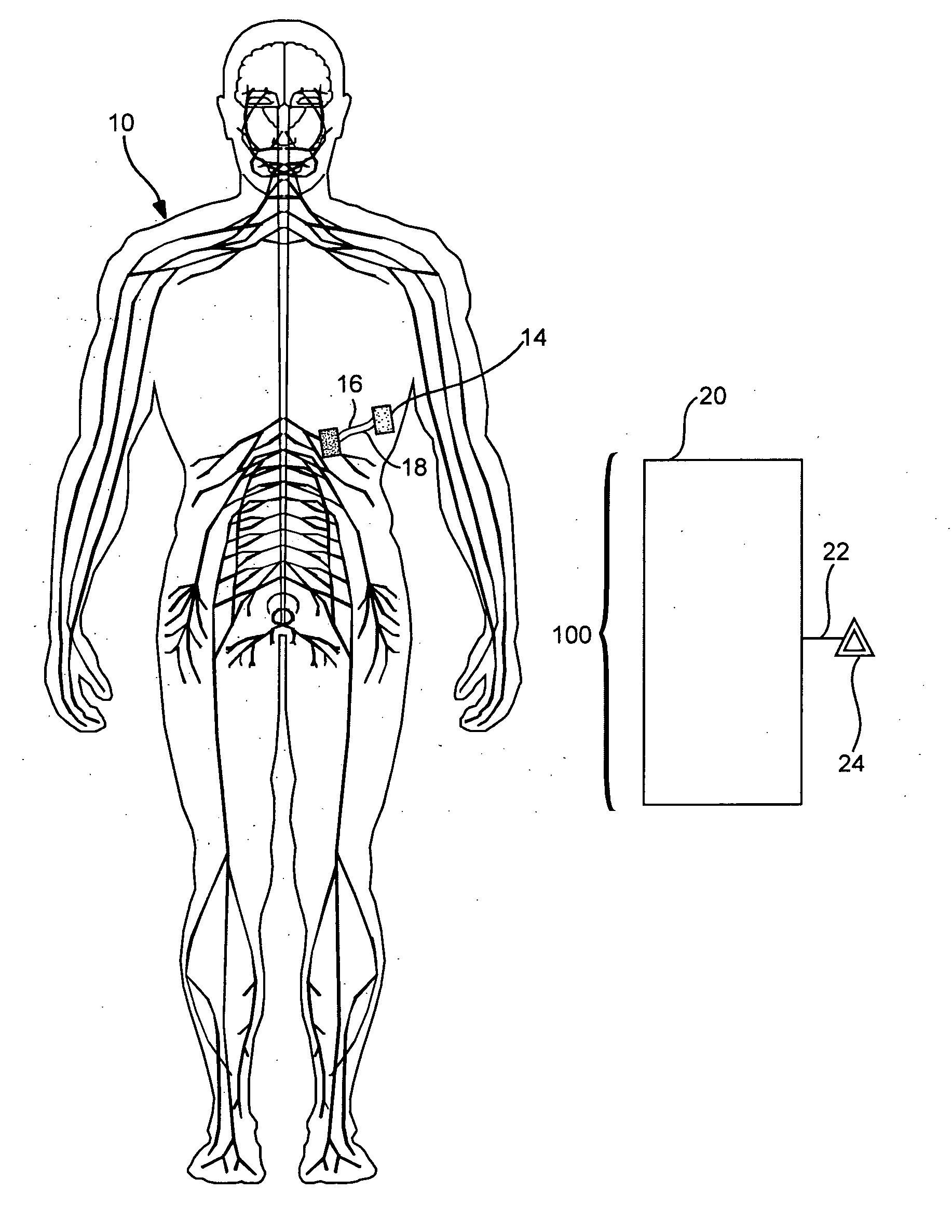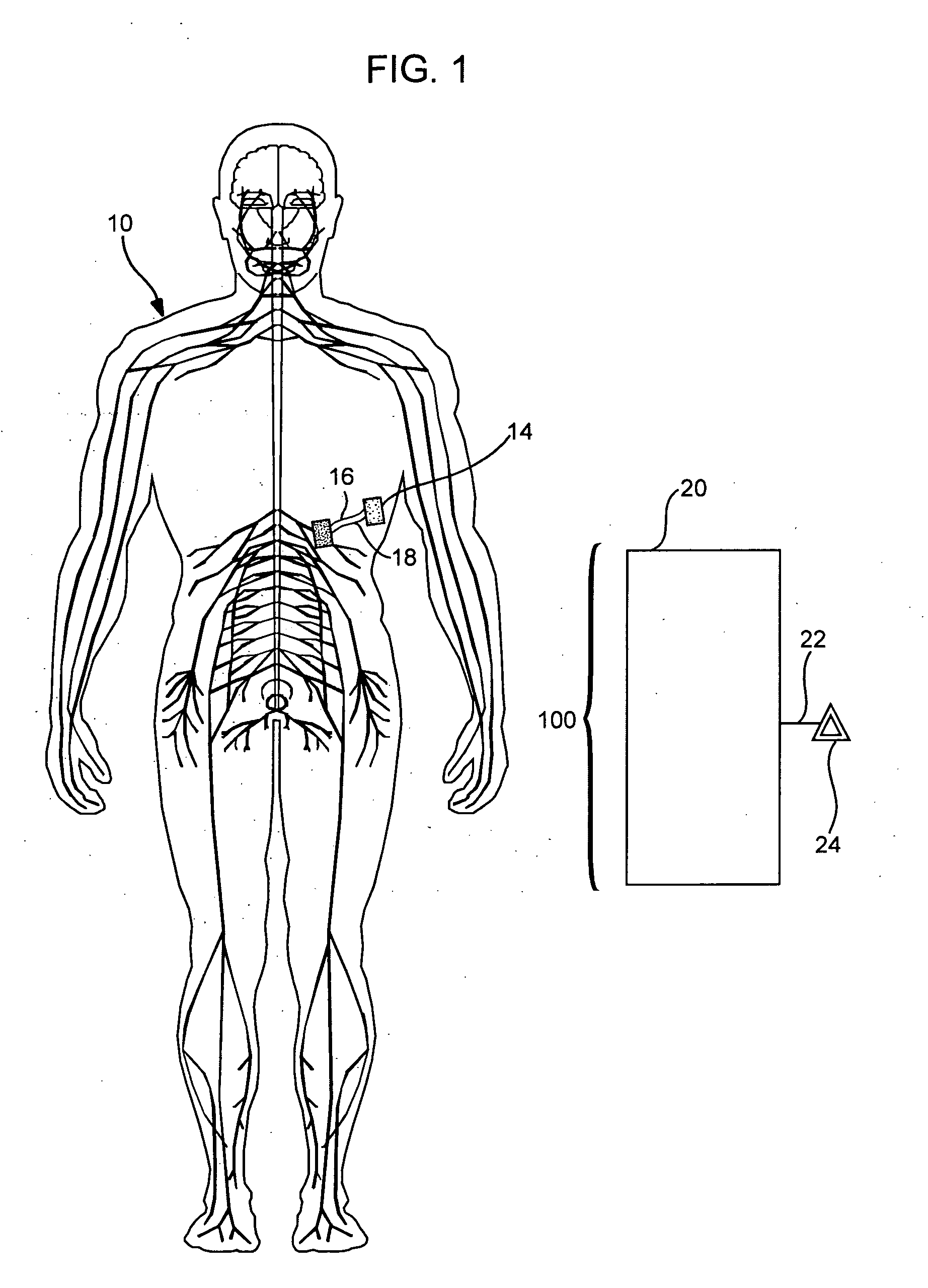Methods and compositions for treating a disease condition in a subject
- Summary
- Abstract
- Description
- Claims
- Application Information
AI Technical Summary
Benefits of technology
Problems solved by technology
Method used
Image
Examples
example 1
Direct Administration of Anti-Inflammatory Agents to Carotid Artery Adventitia to Treat Atherosclerosis
[0124] Double-blinded randomized controlled studies are employed to ascertain the effect of direct administration of anti-inflammatory agents to vessel wall adventitia in carotid atherosclerotic disease. Subjects are selected on the basis of extent of carotid occlusion as determined by ultrasound and MRI. Administration of the anti-inflammatory agent is performed in all subjects in the treatment group via surgical isolation of the carotid artery and affixation of a polymer patch containing the anti-inflammatory agent to the external aspect of the artery. Control subjects undergo the same procedure and receive a patch of similar structure but containing placebo. Administration of the anti-inflammatory agent produces statistically significant diminuition of atherosclerotic occlusion over a six-month study period for the treatment group compared to control as determined by ultrasound...
example 2
Remote Electrical Stimulation to Increase Sympathetic Activity Supplying the Uterine Artery Adventitia to Treat Fibroids
[0126] The uterus represents a model paradigm for the role of vascular biology in overall organ function, as both the pathologic process of fibroid development and the felicitous maintenance of fertility appear to depend on judicious control of appropriate blood flow through relevant channels.
[0127] Double-blinded randomized controlled studies are employed to determine the effect of electrical stimulation of autonomic nerves supplying the adventitia of the uterine artery in reducing the size of uterine myomata. Subjects are selected on the basis of possession of fibroids within particular size and number constraints. Isolation and identification of relevant nerves is performed by placement of monitoring electrodes on the adventitia of the uterine artery and sequential stimulation of nearby nerves until an appropriate response is achieved. An electrical device for...
example 3
Application of Organ Harness to Increase Sympathetic Activity Supplying the Adventitia of the Uterine Vasculature to Reduce Fibroids
[0128] Double-blinded randomized controlled studies are employed to ascertain the effect of application of an organ harness to stimulate sympathetic activity in the adventitia of the overall uterine vasculature in reducing the size of uterine myomata. Subjects are selected on the basis of possession of fibroids within particular size and number constraints. Treatment subjects receive an organ harness deployed on the uterus via a minimally invasive approach. The organ harness consists of a hinged canopy of interlinked Nitinol members designed to ensheath the apex of the uterus. Application of electrical current to the canopy produces contraction via alteration of resistive force and creation of bending moments throughout the structure. This apparatus communicates with a master control unit to supply the current. Control subjects have devices of similar ...
PUM
 Login to View More
Login to View More Abstract
Description
Claims
Application Information
 Login to View More
Login to View More - R&D
- Intellectual Property
- Life Sciences
- Materials
- Tech Scout
- Unparalleled Data Quality
- Higher Quality Content
- 60% Fewer Hallucinations
Browse by: Latest US Patents, China's latest patents, Technical Efficacy Thesaurus, Application Domain, Technology Topic, Popular Technical Reports.
© 2025 PatSnap. All rights reserved.Legal|Privacy policy|Modern Slavery Act Transparency Statement|Sitemap|About US| Contact US: help@patsnap.com


